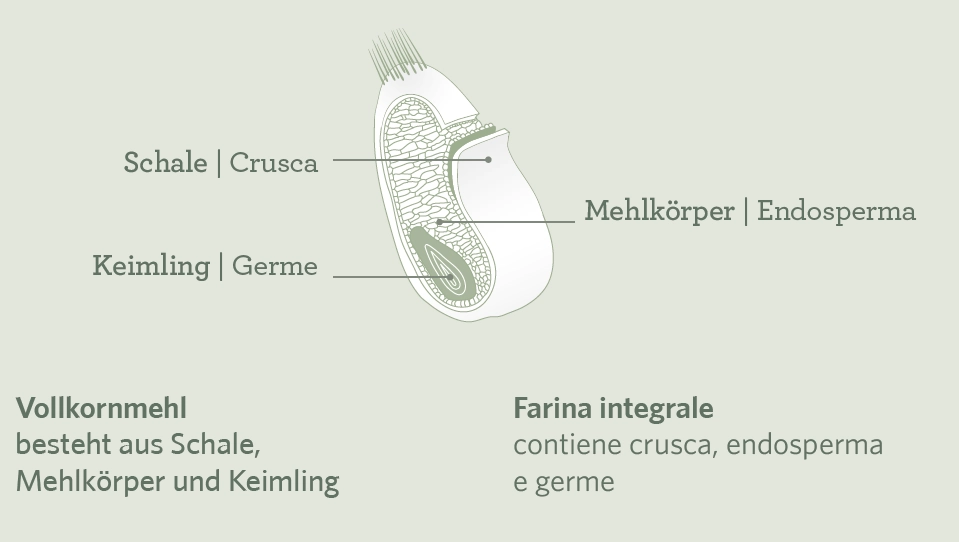What's your type?

There is a second important characteristic of flour besides strength - the so-called “type”, i.e. the degree of grinding. The type describes, regardless of protein, the amount of bran and germ in the flour.
Type 00 and 0
Since it does not contain the coarser wheat particles, this flour is particularly fine and very white in colour. Wheat flour type 00 is ideal for cakes, sponges and more delicate bakes. Wheat flour type 0 is also suitable for pastries and bakery products, such as white bread or pizza. White spelt flour corresponds to type 00 wheat flour.
Type 1 and 2
Flour with a medium type, such as 1 and 2, are darker in colour and have a more rustic flavour, in comparison to type 00 wheat flour. For example, they are suitable for bread making and in combination with types 0 and 00.Wholemeal flour
Wholemeal flour is made from milling the ‘whole wheat’, meaning that all three parts of the wheat are ground to create the flour. As it is milled from the whole grain, it retains its natural nutrients, the most of which are found in the germ and the bran, making it higher in fibre and nuttier in taste than white flour.
In principle, with many types of flour, you can decide whether or not to have external parts of the seed in the flour. Type 0 and 00 are recommended for delicate bakes and for all other preparations, especially bread, type 1, 2 and fibre-rich wholemeal flour are equally well suited.
In principle, with many types of flour, you can decide whether or not to have external parts of the seed in the flour. Type 0 and 00 are recommended for delicate bakes and for all other preparations, especially bread, type 1, 2 and fibre-rich wholemeal flour are equally well suited.
Besides the "degree of grinding" described in this article, there is another important characteristic of flour - the so-called "flour strength". Please find all about this topic here.


